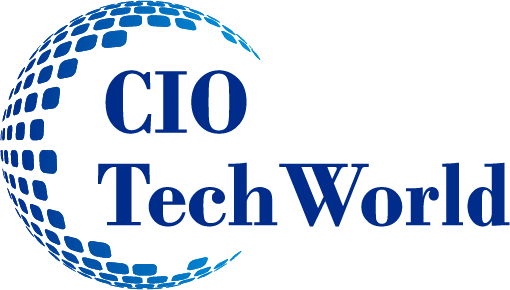Small and medium-sized businesses (SMBs) face unprecedented cybersecurity challenges in today’s interconnected world. While data breaches at large enterprises often dominate headlines, SMBs are increasingly targeted by cybercriminals—yet their incidents rarely make the news. Moreover, SMBs have embraced technology to streamline operations, expand their reach, and enhance customer experiences. However, this digital transformation has also exposed them to greater cyber risks. For SMBs, maintaining strong cybersecurity hygiene is not just about protecting business assets—it’s about safeguarding customer trust and staying prepared for an evolving regulatory landscape.
The Growing Threat Landscape
The investment in cybersecurity hygiene should be viewed not as an expense but as an investment in business continuity and customer trust.
SMBs often operate under the misconception that their size makes them less attractive to cybercriminals. However, statistics paint a different picture. According to recent industry reports, SMBs account for over 43% of all cyber-attacks. This targeting occurs because smaller businesses typically have fewer resources dedicated to cybersecurity while still maintaining valuable data assets.
The consequences of poor cybersecurity hygiene can be devastating. The average data breach cost for small businesses ranges from $120,000 to $1.24 million, often leading to severe financial strain or bankruptcy. Beyond immediate financial impact, the damage to reputation and customer trust can create long-lasting effects that many businesses never fully recover from.
Protecting Customer Data: A Business Imperative
The protection of customer data has become a fundamental business responsibility. Modern businesses collect and store various types of sensitive customer information, including:
- Personal identification details (names, addresses, social security numbers)
- Financial information (credit card details, bank account numbers)
- Purchase history and preferences
- Contact information
- Healthcare information (for medical-related businesses)
When customers entrust their data to a business, they expect it to be handled with the utmost care and security. A single data breach can shatter this trust and lead to:
- Immediate customer churn
- Negative word-of-mouth affecting new customer acquisition
- Legal liabilities and potential lawsuits
- Loss of competitive advantage
- Damaged business relationships with partners and suppliers
The Proactive Approach to Compliance
Regulatory compliance in cybersecurity is no longer optional for many businesses. With regulations like CMMC (Cybersecurity Maturity Model Certification), GDPR (General Data Protection Regulation), CCPA (California Consumer Privacy Act), and industry-specific requirements like HIPAA (Health Insurance Portability and Accountability Act), PCI (Payment Card Industry) and SOC2 (Systems and Organizations Controls 2), businesses must adapt to an increasingly complex compliance landscape. Taking a proactive approach to cybersecurity hygiene helps businesses:
- Stay ahead of regulatory requirements rather than scrambling to catch up
- Reduce the cost and effort of compliance by building security into business processes
- Maintain flexibility to adapt to new regulations as they emerge
- Demonstrate commitment to data protection to stakeholders and regulators
Essential Elements of Good Cybersecurity Hygiene
To establish and maintain effective cybersecurity hygiene, businesses should focus on several key areas:
-
Employee Training and Awareness
Human error remains one of the biggest cybersecurity vulnerabilities. Regular training programs should cover:
- Password management and security
- Email security and phishing awareness
- Safe browsing practices
- Data handling procedures
- Incident reporting protocols
-
Technical Controls
Implementing robust technical controls forms the foundation of good cybersecurity hygiene:
- Regular software updates and patch management
- Multi-factor authentication for all systems
- Encrypted data storage and transmission
- Network segmentation and monitoring
- Backup systems and disaster recovery planning
-
Policy Development and Implementation
Clear policies help establish cybersecurity expectations and procedures:
- Acceptable use policies
- Data classification and handling guidelines
- Incident response procedures
- Remote work security policies
- Third-party vendor management
-
Regular Assessment and Updates
Cybersecurity is not a “set it and forget it” proposition. Regular assessments and updates should include:
- Vulnerability scanning and penetration testing
- Policy reviews and updates
- Compliance audit preparation
- Incident response plan testing
- Security metrics tracking and reporting
Building a Culture of Security
Creating a strong security culture is essential for maintaining good cybersecurity hygiene. This involves:
- Making security a part of every business decision
- Encouraging open communication about security concerns
- Celebrating security successes and learning from incidents
- Providing resources and support for security initiatives
- Leading by example at all management levels
Cost-Effective Implementation Strategies
While robust cybersecurity might seem expensive, there are several cost-effective strategies for SMBs:
- Start with basic security measures and gradually expand
- Utilize cloud-based security solutions with scalable pricing
- Leverage automated tools for routine security tasks
- Partner with managed security service providers
- Prioritize critical assets and systems for protection
The Future of SMB Cybersecurity
As technology continues to evolve, the cybersecurity landscape for SMBs will become increasingly complex. Preparing for the future should involve:
- Monitoring emerging threats and security trends
- Evaluating new security technologies and solutions
- Building flexibility into security programs
- Maintaining strong relationships with security partners
- Planning for long-term security investments
In conclusion, good cybersecurity hygiene is no longer optional for small and medium businesses. It’s a critical component of business operations that protects both the organization and its customers while preparing for future compliance requirements. By taking a proactive approach to cybersecurity, businesses can build trust, maintain compliance, and create a sustainable competitive advantage in an increasingly digital marketplace.
The investment in cybersecurity hygiene should be viewed not as an expense but as an investment in business continuity and customer trust. As cyber threats continue to evolve and regulatory requirements become more stringent, businesses that maintain good cybersecurity hygiene will be better positioned to thrive in the digital economy.
Read more:
Wilfredo Lassalle: Ascending the Career Ladder Fueled by Unyielding Perseverance
Infinidat: Best-in-Class Enterprise Storage Innovation for Data-Driven Organizations

I am a visionary leader and the author of Start with the End in Mind. As the founder of JLS Technology USA, recognized as a top 50 MSSP globally for seven consecutive years, I bring a wealth of experience and entrepreneurial spirit to Simplix. My professional journey includes executive roles at Citigroup and Samsung. I hold a Bachelor’s degree from the University of Phoenix, an MBA from Aspen University, and a Master’s Certificate from Columbia University.








